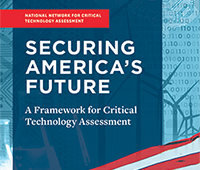The
ability to accurately measure a second in time is at the heart of many
essential technologies; the most recognizable may be the Global
Positioning System (GPS). In a paper accepted for publication in the
AIP’s journal Review of Scientific Instruments,
a researcher at the National Institutes of Standards and Technology
(NIST) and the University of Colorado at Boulder discusses how achieving
a stable and coordinated global measure of time requires more than just
the world’s most accurate timepieces; it also requires approximately
400 atomic clocks working as an ensemble.
According
to the researcher, however, calculating the average time of an ensemble
of clocks is difficult, and complicated statistics are needed to
achieve greater accuracy and precision. These statistical calculations
are essential to help counter one of the most important challenges in
keeping and agreeing on time: distributing data without degrading the
performance of the source clocks.
All
atomic clocks operate in basically the same way, by comparing an
electrical oscillator (a device engineered to keep time) with the
transition frequency of an atom (one of nature’s intrinsic time
keepers). This atomic transition is a “flip” in the spin in the
outermost electron of an atom—an event that is predictable with an
accuracy of a few parts per ten quadrillion.
Comparing
the natural and engineered signals produces the incredibly stable
“tick” of an atomic clock. Several algorithms are then used to estimate
the time of the reference clock with respect to the ensemble of clocks.
These calculations weed out as much error as possible and establish a
reliable reference time. The researcher notes that there are strengths
and weaknesses in each of these statistical steps, but these weaknesses
can be mitigated to some extent by also including retrospective data.
So,
in essence, determining the current time relies on understanding how
accurately researchers were able to calculate time in the past. Even the
next generation of atomic clocks and frequency standards are unlikely
to eliminate the need for these timescale algorithms. However, keeping
time and frequency signals and standards the same in all countries is
essential and greatly simplifies international cooperation in areas such
as navigation, telecommunication, and electric power distribution.
Article: “The Statistical Modeling of Atomic Clocks and the Design of Time Scales” is accepted for publication in the journal Review of Scientific Instruments.
Author: Judah Levine, Time and Frequency Division, National Institutes
of Standards and Technology and the University of Colorado at Boulder




